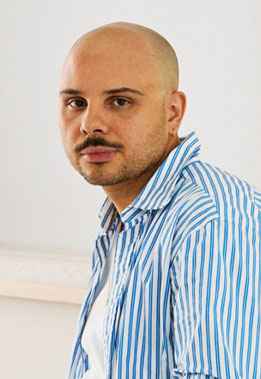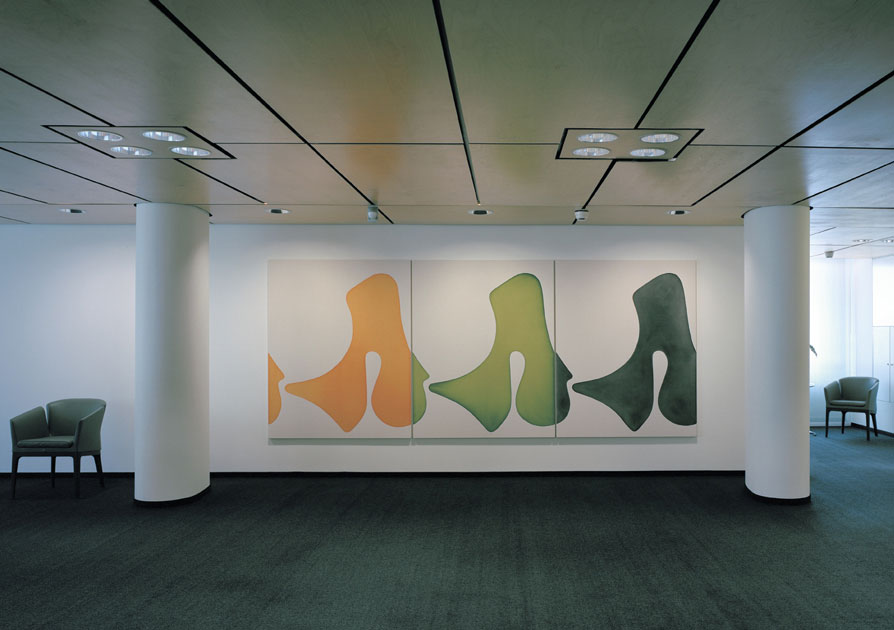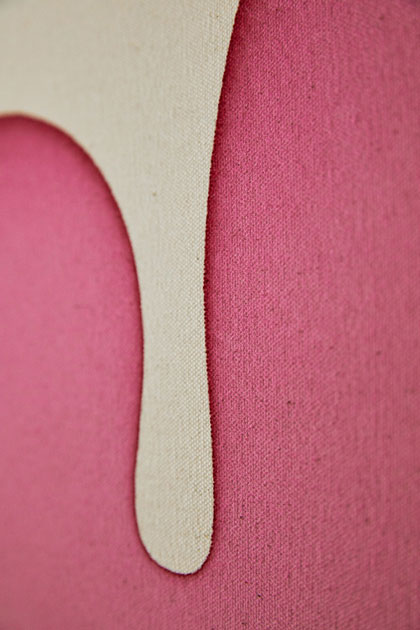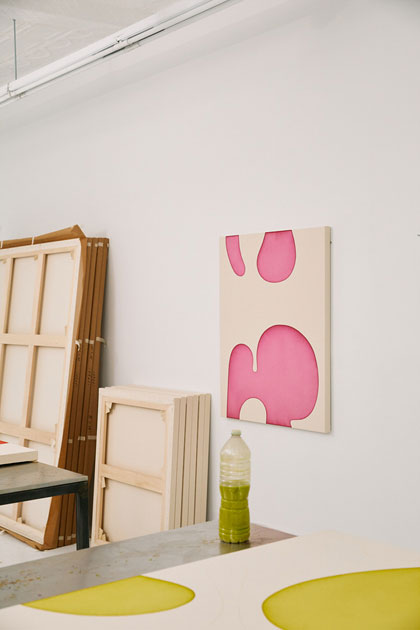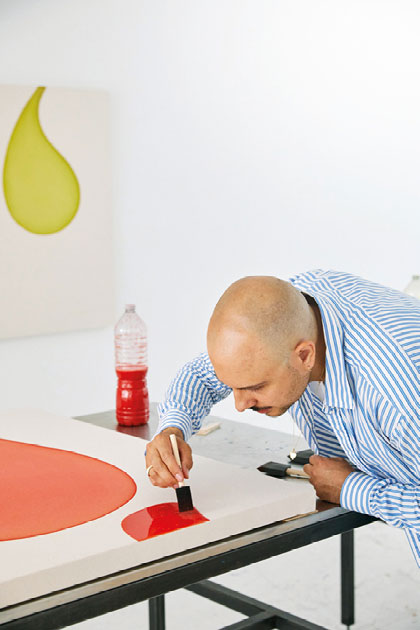Landon Metz
Landon Metz’s paintings can potentially expand indefinitely in all directions in series.
TEXT / Uwe Wieczorek
Landon Metz’s paintings do not have their creative origins primarily in the tradition of painting, although he is aware of their “historical baggage”, referring, for example, to American colour field painting, more specifically to the works of Morris Louis, but also to those of Marcel Duchamp. Rather, it was probably above all the scenic impressions of his native Arizona, the striking topography of this North American desert state, that shaped his sensual attention and, beyond the visual, the practice of music, the sense of rhythm, of the alternation of silence and sound, of emptiness and fullness, and ultimately the knowledge of the works of John Cage, the master of silence.
Landon Metz paints monochrome shapes with an organic character and clearly defined outlines on unprimed canvas. Although each painting represents a self-contained unit, Metz prefers to place it in a series of several directly adjoining paintings with identical dimensions and identical shapes. The shapes are always cut by the edges of the picture and only completed by complementary shapes of the adjoining pictures. This means that each individual painting contains all the parts of an overall shape that belong together, but in a broken-up and opposing arrangement. Through the principle of combinatorial addition in series, the paintings can potentially expand indefinitely in all directions. As a matter of fact, Metz conceptually coordinates the display of his works at exhibitions with the structure of the rooms, creating either picture friezes, picture walls or picture steles. Nevertheless, each painting always remains conceivable and possible as an individual display.
Being an artist is everything. It’s my life. I’m grateful that this language is available to me.
Metz works with extreme care, applying the colour medium he has prepared himself with hair or foam brushes, following exactly the outlined shape on the canvas, which absorbs the liquid medium. The colours appear largely homogeneous, but become denser at the edges of the shapes, giving them a compact, sometimes even plastic effect. Generally, Metz makes use of the entire colour palette, but depending on the context and sentiment, he also makes a limited selection, right down to the monochromaticity of all the shapes in a series. Given the rhythmic repetition of the coloured shapes and the open spaces, a floating, sometimes dancing lightness emanates from all the picture sequences, which is transferred to the viewer and stimulates him or her.

Image: Emiliano Granado
